Collecting Contemporary
The Craig Robins Art Collection
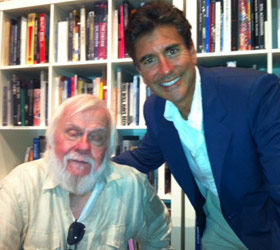

Anthony Japour (AJ) is an independent curator, private art dealer and owner of AJ Japour Gallery. The gallery deals in contemporary art with a focus on the Chinese Contemporary Art Movement and its relationship to the pillars of Western Contemporary Art. Since 2003, AJ has produced numerous art exhibitions and installations in Miami and South Florida. In addition, the Gallery’s secondary mission is to support organizations dedicated to the health, education, and welfare of children. AJ has served on the Fine Arts Board and the Cultural Arts Council of the City of Miami Beach.
Craig Robins began seriously collecting art seventeen years ago. Having studied law at the University of Miami back in the 1980’s, Robins spent a year abroad in Barcelona where he fell in love with the work of Salvador Dali and Goya. The first work he acquired was a piece by Salvador Dali. Years later when he became more serious about collecting important works, he hired New York City-based art dealer Jack Tilton as his art advisor. While the collection has amassed well over 1000 objects, in recent years Robins has focused the collection decidedly collecting fewer artists but in greater depth.

Robins exhibits his art collection in his commercial offices –DACRA- and exhibitions rotate under the watchful eye of Tiffany Chestler, Robins long-time curator and Director of Cultural Programming. The collection is steeped in conceptualism, but retains a humorous and playful feeling.
Craig Robins Art Collection
3841 NE 2nd Avenue, #400
Miami, FL 33127
www.dacra.com
John Baldessari
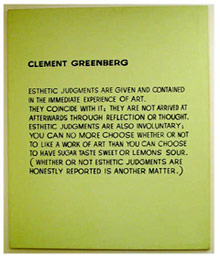
John Baldessari (American, born 1931) has been the subject of over 200 solo exhibitions and has been included in more than one thousand group exhibitions. The first of a multivolume Catalogue Raisonné was just published by Yale University Press and while writing this column, I had the opportunity to meet the artist at a Los Angeles County Art Museum sponsored book signing and artist talk with Contemporary art curator and art historian Hans-Ulrich Obrist.
Generally considered the grandfather of conceptual painting, John Baldessari looms large in influence in the succession of contemporary artists from America’s West Coast-primarily Los Angeles. Baldessari began his career as an art teacher in the San Diego School system and eventually moved to CalArts in Santa Monica, California where he taught many artists who also later became important in the international contemporary art world; among those, is the recently deceased, Mike Kelley, who tragically took his own life earlier this year.
While John Baldessari works are highly diverse, his early-heralded work included text as the primary source for his works on canvas. Craig Robins has collected Baldessari in depth and on view at DACRA was one of my favorite pieces, an early work, Clement Greenberg, 1966-68.
In 2009-2010, Baldessari and colleague Ed Ruscha (the subject my July 2012 Social Miami Column at MoCA in North Miami) each had major retrospective exhibitions in London. Baldessari was at the Tate Modern, with a show entitled Pure Beauty while Ruscha was at the Hayward Gallery with Portraits of America: 50 years of Painting. Having seen the side-by-side exhibitions as an American in London, from the outside I thought it was brilliant planning by both institutions for the Anglo-European audiences because the pairing was so much more impactful than either exhibition would have been on its own.
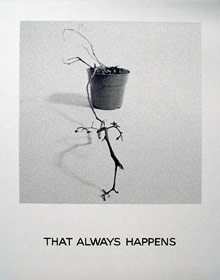
Richard Tuttle
Richard Tuttle (American, born 1941) back in the mid-1960’s began to create irregularly shaped wood objects and shaped but un-stretched canvases in offbeat colors we associate with that time period such as avocado green Cloth, Octagonal, 2, 1967. His practice evolved to include a variety of shapes, colors, and scale with minimalism as its unifying concept. Many important collectors feel Tuttle is likely an undervalued and possibly even underappreciated artist. Nevertheless, Robins has collected over sixty-five Tuttle works. At the DACRA offices where several Tuttles were on view, the works, in their simplicity work well with the more intricate works by such artists as Rirkrit Tiravanija, Kehinde Wiley, and Mike Kelley.
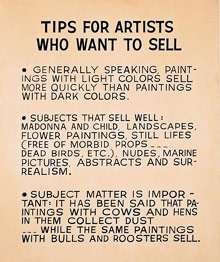
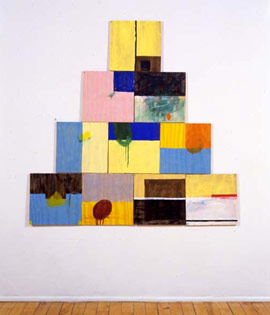
Rirkrit Tiravanija
Rirkrit Tiravanija (Argentinean, 1961) known as “Rirkrit” is an artist who assiduously avoids making art objects. Instead, his practice is about the interaction of people, which has come to be known as Relational Aesthetics or Relational Art; here, the artist is viewed as a “catalyst” in the art viewing experience rather than being at its “center”. Interesting concept. Relational Aesthetics was a term first used in 1996 by curator Nicolas Bourriaud in an essay for an exhibition at the CAPC musée d’art contemporain de Bordeaux entitled Traffic, including among other artists Rirkrit Tiravanija. For that exhibition, Rirkrit used brown packaging cardboard to make tables and chairs, each with a minibar of red wine and mineral water. . . humorous!
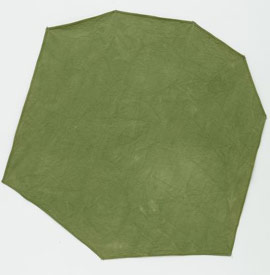
In 1992, Rirkrit, of Thai descent, created an exhibition entitled Untitled (Free), where he famously created a kitchen in a gallery and served rice and curry for free. This work as been restaged over the years including most recently this year at the Museum of Modern Art in New York. Last April, an updated work related to cooking was Soup/No Soup, 2012 a large twelve-hour meal composed of Tom Ka soup, installed at the Grand Palais in Paris for the opening of La Triennale 2012
Rirkrit Tiravanija’s works are sometimes highly politically charged. In 2004, he won the prestigious Hugo Boss Prize (administered by the Solomon R. Guggenheim Museum) and presented an exhibition of a work known as Untitled 2005 (The Air Between the Chain-Link Fence and the Broken Bicycle Wheel). The installation alluded to conspiracy theories of governmental control of the media using an antenna, cables, a television set and some chairs. The US Constitution First Amendment (advocating freedom of speech), a history of radio and television communication in America hung on the walls.

I was intrigued by a number of graphite drawings I saw at DACRA , one clearly relating to another in some way which I later learned were part of an ongoing series “by” Rirkrit known as the Demonstration Drawings, with over 200 works on paper- each derived from photographs lifted from the International Herald Tribune. Here “by” in quotes because while the concept is Rirkrit’s, the drawings themselves are done by local artists Rirkrit hires and pays—helping the local micro economy. The message behind the work? Possibly, the artist suggests that there’s much more than we see on television; political protests and social conflicts occur with regular frequency throughout the world well beyond the cacophony of our 24/7 news cycle.


